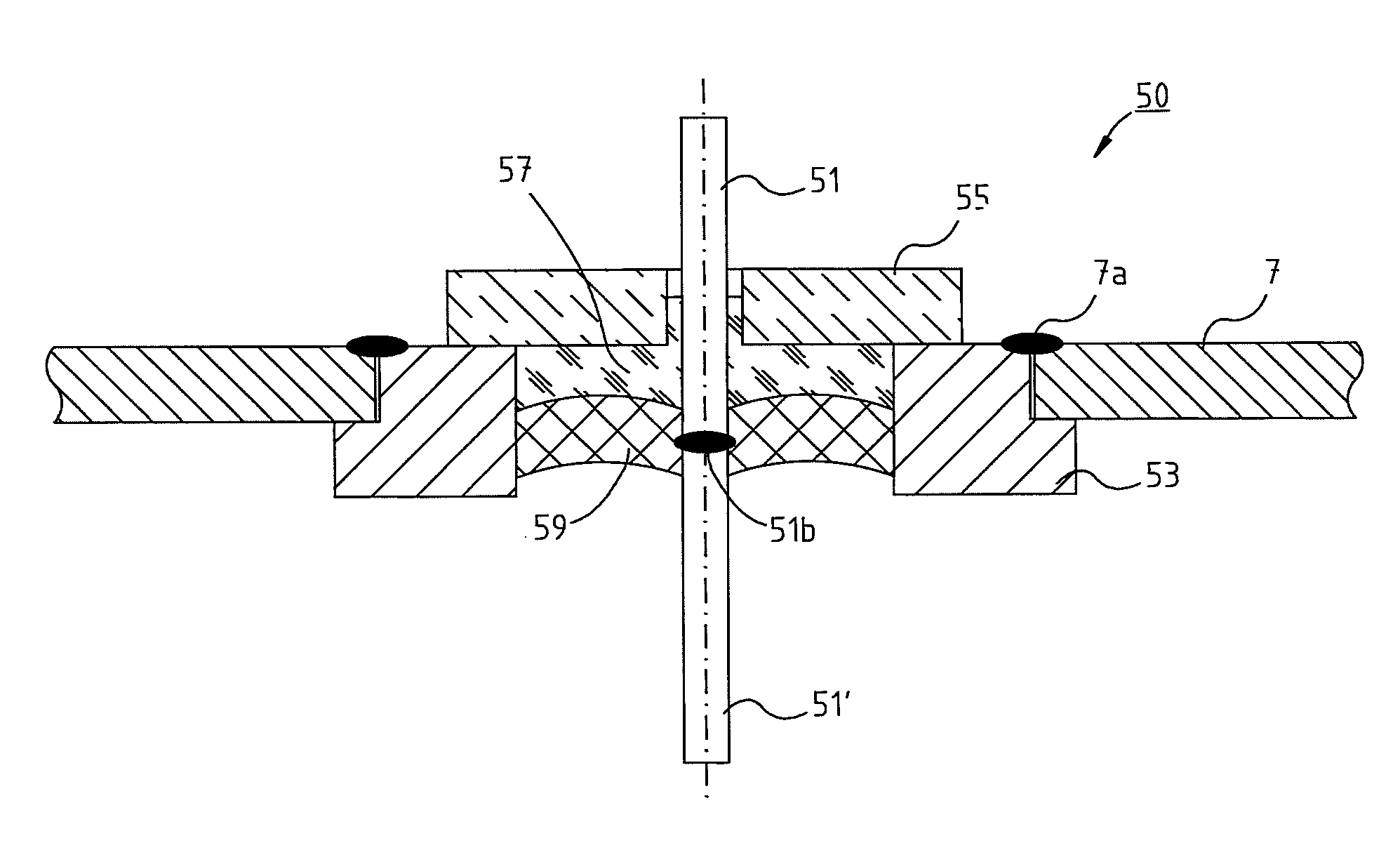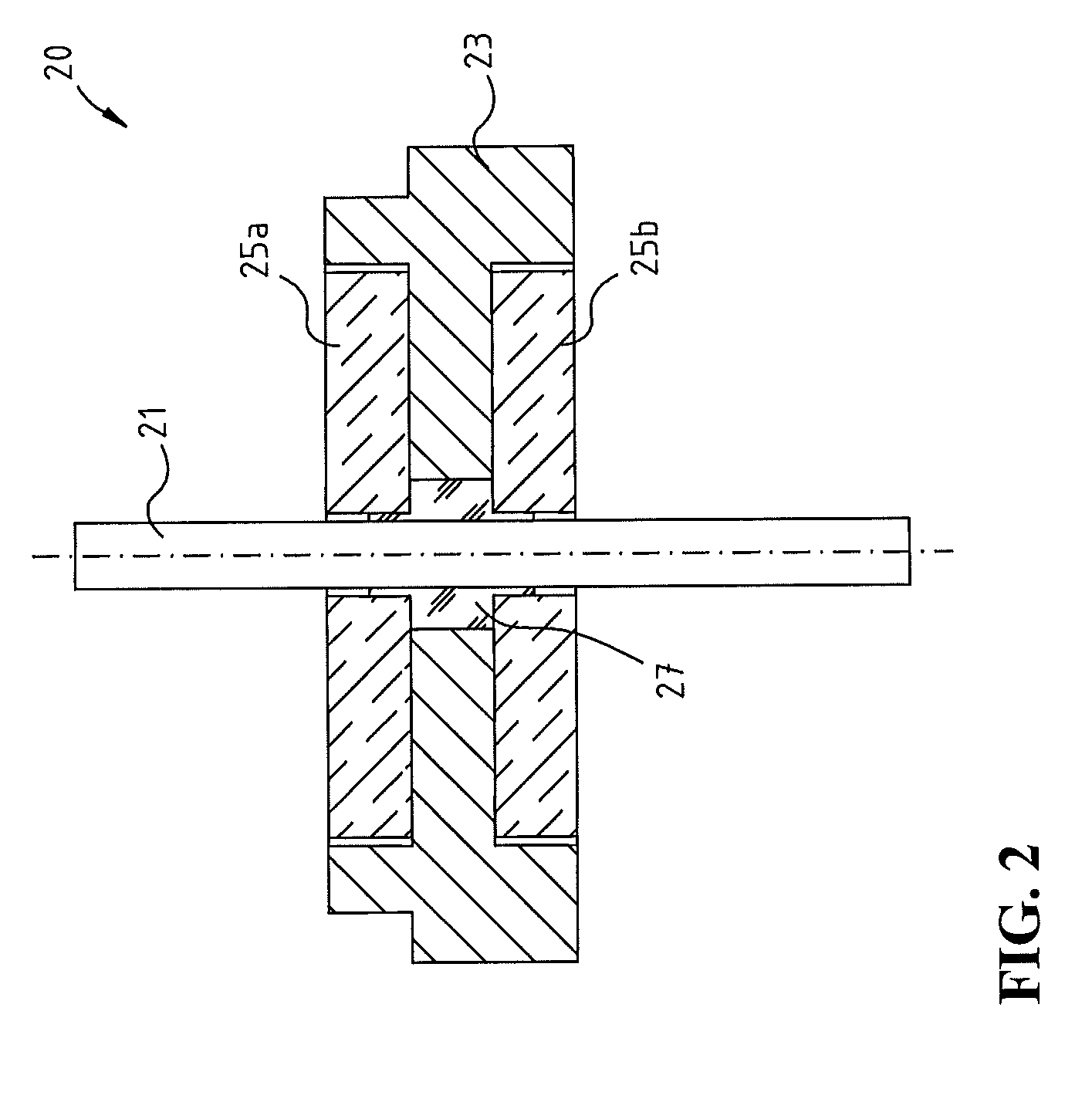Electrical feedthrough of a capacitor for medical implants and method for the production and use thereof
a technology of medical implants and capacitors, which is applied in the direction of electrolytic capacitors, electrotherapy, therapy, etc., can solve the problems of contaminating the interior of the device in which they are installed, the capacitor interior cannot be escaped (very slow), and the capacitor is difficult to manufacture, etc., to achieve the effect of reducing the risk of contamination, facilitating process control, and facilitating the subsequent soft soldering of the external terminal
- Summary
- Abstract
- Description
- Claims
- Application Information
AI Technical Summary
Benefits of technology
Problems solved by technology
Method used
Image
Examples
Embodiment Construction
[0018]FIG. 1 shows a perspective illustration of a known construction of an electrolyte capacitor 1 having two terminal pins 3 and 4, and a feedthrough 5 being shown schematically outlined on a front side of a housing 7.
[0019]FIG. 2 shows, as an embodiment of the present invention, a feedthrough 20 having an aluminum terminal pin 21, an aluminum flange 23 provided on the top and bottom with flat cylindrical recesses, and ceramic discs 25a, 25b, each lying in the aluminum flange 23, and having a central opening for the passage of the aluminum pin 21. A housing wall (not shown here) adjoins the construction on the exterior of the aluminum flange 23, and a glass solder plug 27 is located between the central part of the aluminum flange 23 and the inner walls of the central openings of the ceramic discs 25a, 25b and the external surface of the pin 21, which hermetically seals both the pin 21 and also the aluminum flange 23 in relation to the surrounding surfaces, so that overall a hermet...
PUM
| Property | Measurement | Unit |
|---|---|---|
| melting temperature | aaaaa | aaaaa |
| soldering temperature | aaaaa | aaaaa |
| soldering temperature | aaaaa | aaaaa |
Abstract
Description
Claims
Application Information
 Login to View More
Login to View More - R&D
- Intellectual Property
- Life Sciences
- Materials
- Tech Scout
- Unparalleled Data Quality
- Higher Quality Content
- 60% Fewer Hallucinations
Browse by: Latest US Patents, China's latest patents, Technical Efficacy Thesaurus, Application Domain, Technology Topic, Popular Technical Reports.
© 2025 PatSnap. All rights reserved.Legal|Privacy policy|Modern Slavery Act Transparency Statement|Sitemap|About US| Contact US: help@patsnap.com



